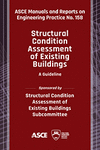Back Matter for Structural Condition Assessment of Existing Buildings
Publication: Structural Condition Assessment of Existing Buildings: A Guideline
Abstract
Back matter pages come after the papers or chapters in a published work. This back matter contains an index.
Formats available
You can view the full content in the following formats:
Note: Page numbers followed by f and t indicate figures and tables.
Information & Authors
Information
Published In
ISBN (Online): 978-0-7844-8542-2
Copyright
© 2024 by the American Society of Civil Engineers.
History
Published online: Jul 3, 2024
Authors
Metrics & Citations
Metrics
Citations
Download citation
If you have the appropriate software installed, you can download article citation data to the citation manager of your choice. Simply select your manager software from the list below and click Download.
